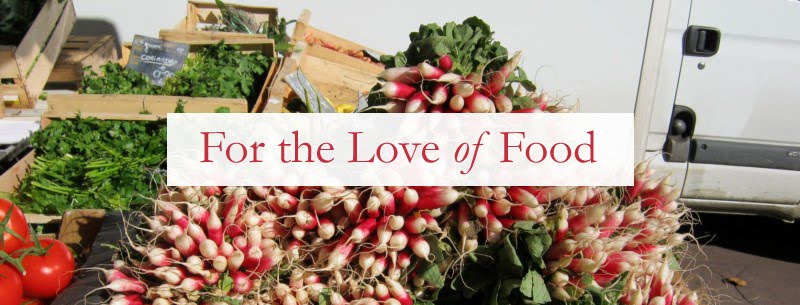The method for roasting a chicken couldn't be simpler--I wrote about it in a previous post here but basically all you need to remember is to rinse the chicken inside and out, dry it thoroughly so that the skin will crisp up in the oven, roast it in a preheated 425° oven for about 10 minutes per pound, season it heavily with salt and pepper inside and out and let it rest, covered, for about 10 minutes after you remove it from the oven. You can apply a light coating of olive oil or butter to the chicken before seasoning it if you want to, but in this case I didn't and the skin still crisped up nicely.
I wanted some nice, hearty sides to go along with the chicken and decided on roasted potatoes (a natural pairing) and slow-cooked green beans with garlic and tomatoes. I halved or quartered some red new potatoes, depending on their size, tossed them with olive oil, salt, pepper and dried oregano, and arranged them, cut side down, on the bottom tray of a broiler pan. This is a great method for roasting potatoes because the pan gets super hot in the oven and the cut sides of the potatoes get incredibly dark and crispy. I also tossed a couple of unpeeled garlic cloves in with the potatoes. Here they are pre-roasting:

After laying out the potatoes on the broiler tray I positioned the broiler rack directly over them and placed the trussed, seasoned chicken on it. This adds even more flavor to the potatoes, as the rendered fat and juices from the chicken drip onto the potatoes throughout the cooking process. The potatoes will take the same amount of time as the chicken; toss them halfway through cooking and use that opportunity to rotate the chicken, too. Here are the roasted potatoes, served with chopped fresh parsley:

For the green beans, as I mentioned above, I decided to go the slow-cooking route. It seems to me that green beans are almost always served al dente--either steamed or briefly sauteed. I like those OK, but they often taste grassy and somewhat raw--good tossed in a salad, but somewhat underwhelming on their own. I prefer to cook the beans a little longer, until they soften and develop a little more flavor. For this rendition, I started by cooking a lot of chopped garlic in some olive oil in a large, wide pan set over medium heat. Then I added the rinsed, trimmed and halved green beans, some salt and some red pepper flakes. I followed up with a small can of peeled plum tomatoes, crushing the tomatoes by hand as I added them to the pan along with all of their liquid. Once that came to a simmer, I lowered the heat and allowed the mixture to cook for about 15-18 minutes, or until the beans were tender and the tomato liquid had reduced. I served these with parsley as well:

And here's the chicken, out of the oven, post-resting and pre-carving:

And a piece of white meat plated up with the sides:

Comforting, homey and perfectly complemented by a nice glass of red wine. What more can you ask from a simple weeknight dinner?






